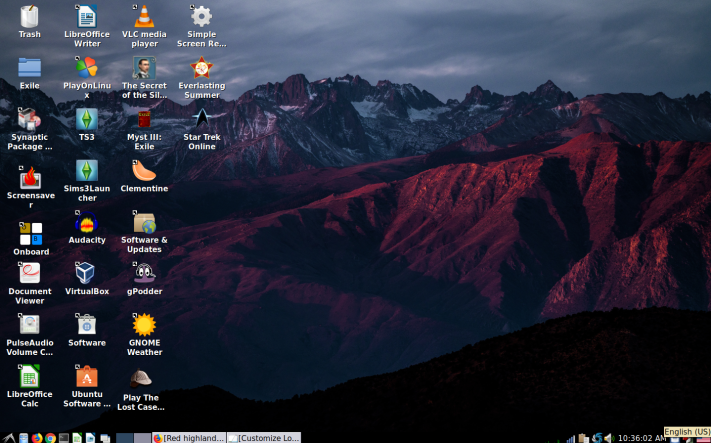
The LXDE desktop is a lightweight desktop environment that is available for many different Linux distributions. It is considerably lighter on system resources than other lightweight desktop environments, such as XFCE. Configuration of LXDE is a little bit more involved than in other desktop environments, such as Unity or KDE. The appearance of LXDE might seem a little bare-bones to people who are used to a lot of eye candy, but the LXDE environment runs so incredibly fast, even on older machines, and it’s also highly configurable, so it’s well worth any bells and whistles you might lose compared to a more resource intensive desktop. You can make up for any of LXDE’s visual flaws by applying an awesome desktop background, such as the one above by John Towner on Unsplash.
The LXDE Panel
One of the most important elements of the LXDE desktop is the panel. You can place your panel at the bottom, top, or sides of the screen, but the default location is at the bottom. The LXDE panel is similar to the Windows taskbar, and all of the items, including the “start” button, the quick launch bar, the program tabs and systray are all in the same place. So if you tend to switch back and forth between Linux and Windows, using the LXDE panel at the bottom of the screen is quite helpful, since you won’t find yourself looking automatically in the wrong place for items you need to use.
To change the appearance of your panel, right click the panel and select Panel Settings.
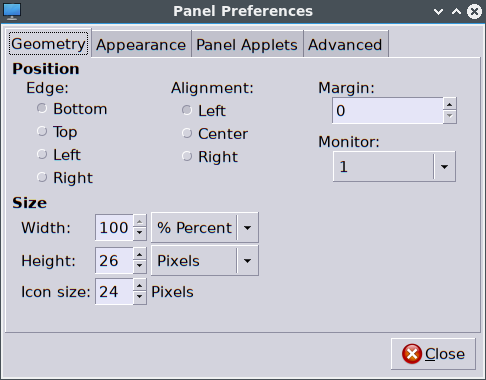
In the Geometry tab, you can select the location, alignment, margins and size of the panel on the desktop.

In the Appearance tab, you can choose the background and font settings for the panel.
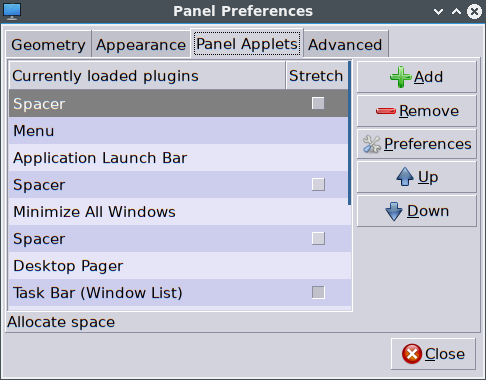
In the Panel Applets tab, you can add or remove items on the panel, including the Application Launch Bar.
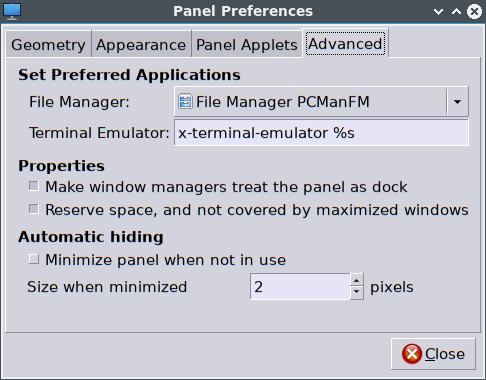
In the Advanced tab, you can set the preferred applications for your file manager and terminal, choose properties such as whether window managers treat the panel as a dock and reserve space that is not covered by maximized windows, and choose to hide the panel when not in use.
The LXDE Menu
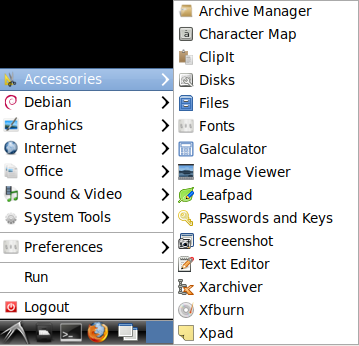
The LXDE menu is one of the best places to access programs. To configure the menu, download and install the LX Menu Editor (lxmed) according to the instructions on the website. Also make sure you have Java installed prior to running lxmed. Then execute the program with the following command:
sudo java -jar /opt/lxmed/LXMenuEditor.jar
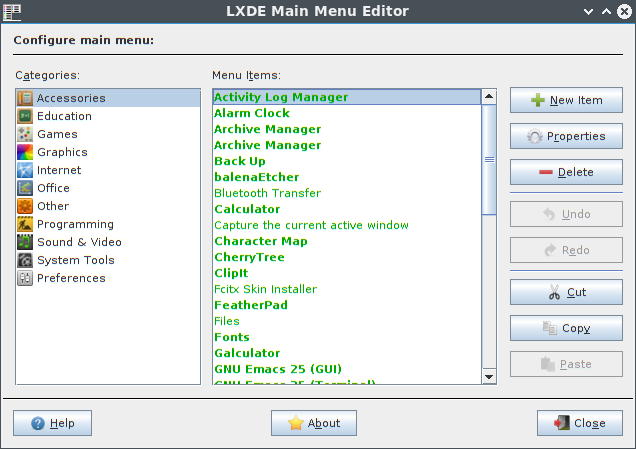
To create a new menu item, click New Item. To remove an existing menu item, select the item and click Delete. To move an item to a different location in the menu, select the item and click Cut or Copy, then paste it into the desired location. To see information about a menu item, select it and click Properties.
To add shortcuts to the desktop, simply click the LXDE “Start” button in the lower left-hand corner, and navigate through the menu for the program you want. Then right-click the item and select Add to Desktop. To remove a shortcut from the desktop, simply right-click the shortcut and select Move to Trash.
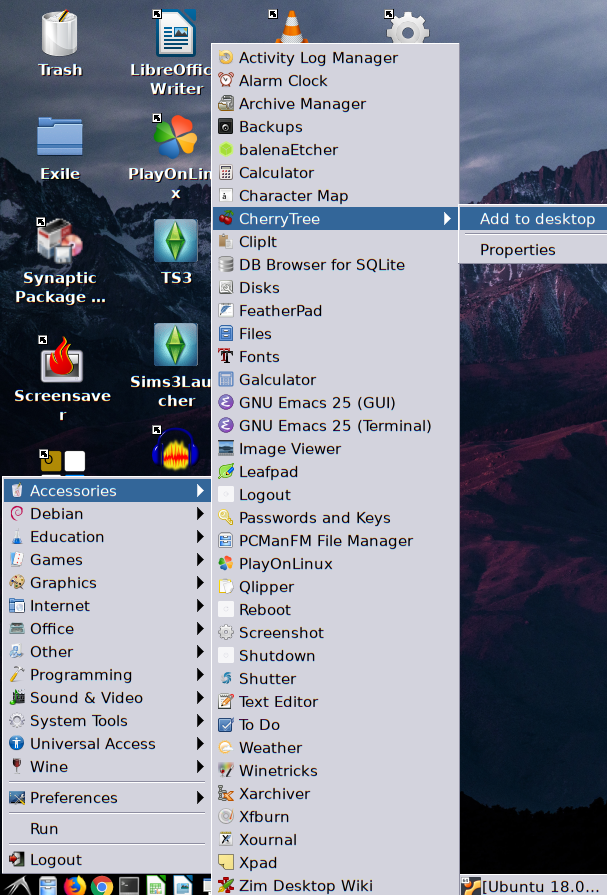
The LXDE Application Launch Bar
The Application Launch Bar is another handy spot to place shortcuts to frequently used programs on LXDE. To edit it, right click any item in the bar, then select Application Launch Bar Settings.
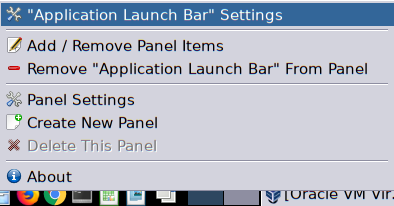
In the next dialog box, you can select which items to add to or remove from the Application Launch Bar. When adding items, navigate through the Installed Applications window for the desired program, then click Add. It’s best to be very frugal with this bar, adding only the applications you use most frequently.
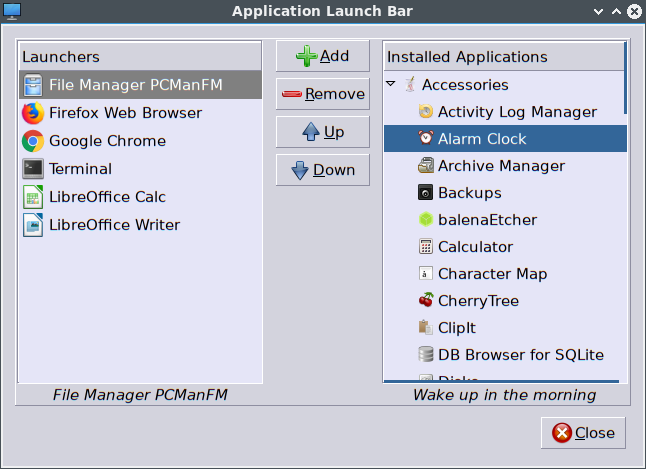
Additional Panel Applets
The right side of the panel provides control of or information for certain Linux programs, much like the systray in Windows. To edit the panel in this area, right click the panel and select Add/Remove Panel Items. Useful applets to add include a volume icon, a CPU usage monitor, a WiFi monitor, a clock and calendar, a screen lock applet, a logout applet, and a keyboard layout handler applet, among many others.
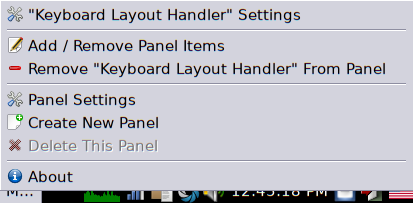
LXDE Appearance Settings
The easiest way to configure the overall appearance of the LXDE desktop is by clicking the start button, Preferences and Customize Look and Feel.
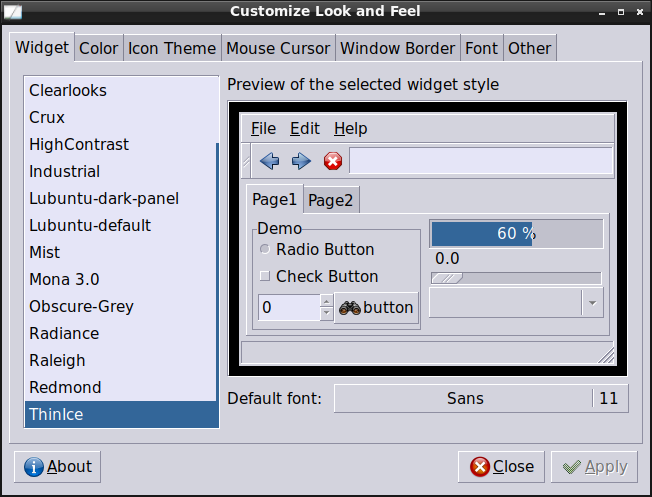
The Widget tab allows you to change the overall style of the windows in Linux. Here is where you can apply a light theme like Radiance, or a dark theme like Ambiance, for example. You can download and install widget themes from sites like Github, OpenDesktop and Gnome-Look. Any themes which you have installed yourself will appear in this window.
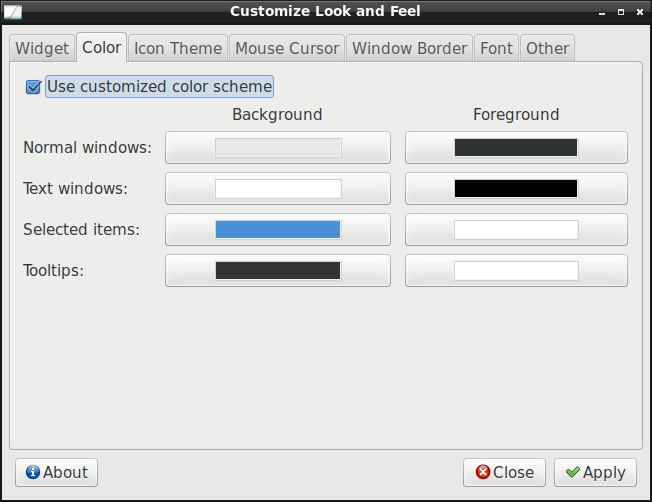
The Color tab allows you to set custom colors for your LXDE widget theme. Many widgets cannot accept custom colors, so you may have to change your widget theme to use custom colors.
![]()
The Icon Theme tab allows you to change your system icons. You can also download icon themes online and install them. But many of the built-in icon themes are quite nice. I personally had a problem with the dark volume icon being invisible against the dark bottom panel, and I had to go through a few icon themes before I found one that worked with my widget theme, and was also appealing overall.
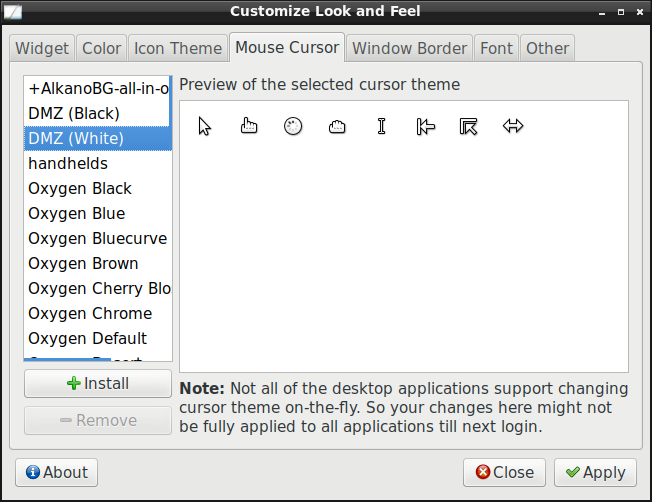
The Mouse Cursor tab allows you to change your mouse cursor theme. If you choose a light theme, for example, you might have to manually select a light mouse cursor theme, and if you choose a dark theme, a dark mouse cursor theme, accordingly.
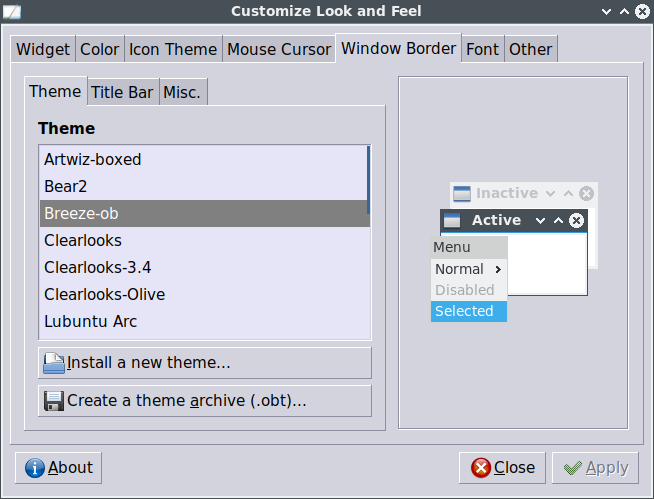
The Window Border tab allows you to choose the appearance of window borders and drop-down menus. Here I’ve changed my window border theme from Onyx, which has shading on the window borders (see above photos), to Breeze-ob, a flat window border theme. All of the window border themes have some advantages, but some people might feel that the flat themes have a more modern look.
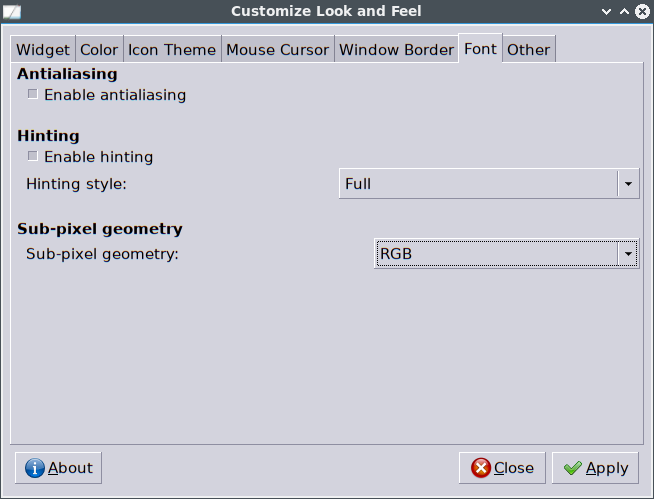
The Font tab allows you to control the appearance of fonts on your desktop. If your fonts look harsh and hard-edged, select Enable Antialiasing. If you’re using a computer with a low screen resolution, you should also choose Enable Hinting. You can choose between Slight, Medium, and Full. If you have an LCD or LED screen, select Sub-Pixel Geometry and select the type that is right for your screen. If you’re still using a CRT monitor, set the Sub-Pixel Geometry to None.
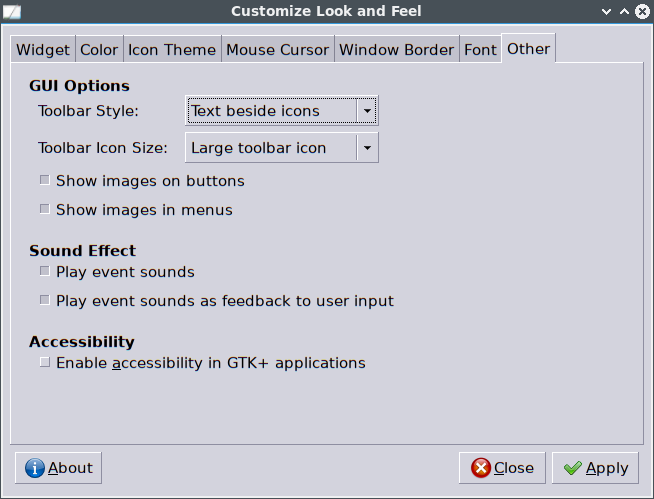
The Other tab allows you to set options for toolbars, buttons, menus, sound effects and accessibility. The default settings are Text Beside Icons, Large Toolbar Icon, and enabled images on buttons and menus. Event sounds are also enabled by default. Accessibility is disabled by default. Trial and error is the best way to get the look and feel you want for your LXDE desktop, but the default settings should be fine for most people.
LXDE Desktop Preferences
To control other aspects of the appearance of the LXDE desktop, simply right click the desktop and select Desktop Preferences, or click the Start menu, select Preferences and Desktop Preferences.
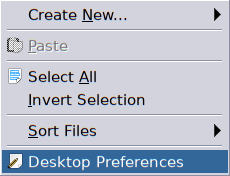
In the next dialog box, you can change important settings for your desktop.
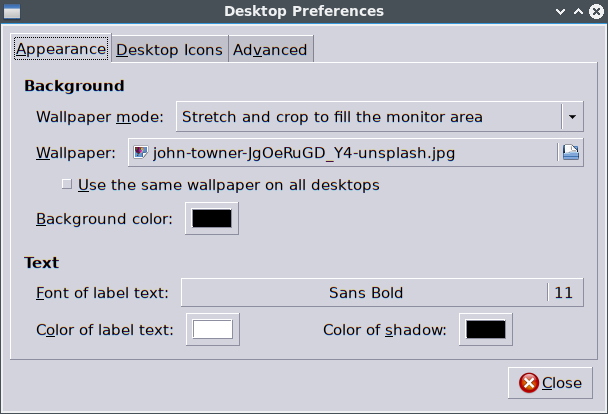
The Appearance tab lets you change your desktop wallpaper, and choose settings for the wallpaper. In this tab you can also select a solid color for your desktop background. You can also select the font and color for label text.
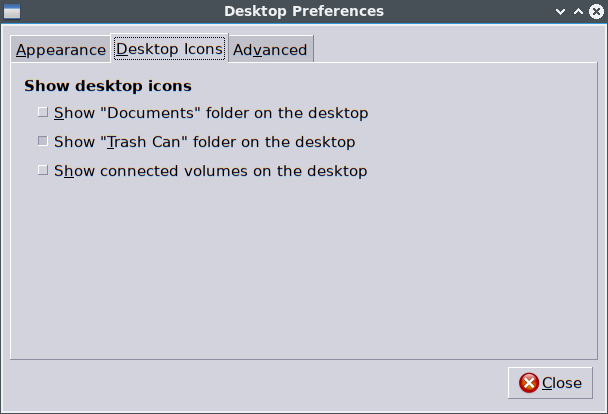
In the Desktop Icons tab, you can choose whether to display a Documents folder, a Trash Can folder, or a Connected Volumes icon on the desktop.
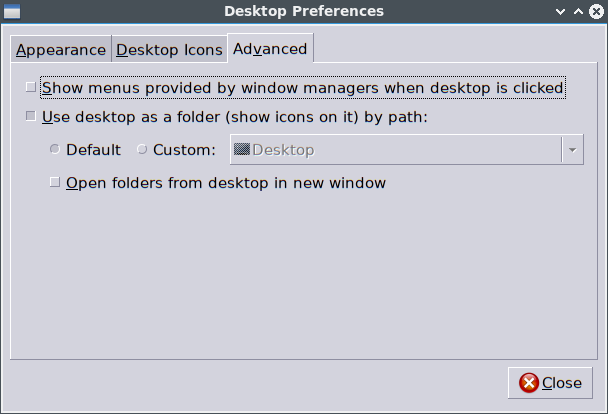
The Advanced tab lets you choose to use the right-click context menu provided by your window manager instead of the LXDE context menu, or use the Desktop as a folder.
These tips will help you get the lean, mean LXDE desktop that meets all your computing needs.
Additional Reading
How to Change the Screen Brightness on an LXDE Desktop
How to Change the Background Wallpaper on an LXDE Desktop
I realize this is nearly over a year old … I’ve recently switched to LXDE. I note that when I double-click a desktop icon it prompts me to [Execute] [Execute in Terminal] [Open] [Cancel]. Is there a way to just have it launch the executable without prompting?
Thanks in advance
LikeLike
You can use the start button on the lower left to open the menu, then find t he item you want, right click on it and select Add to Desktop.
LikeLike